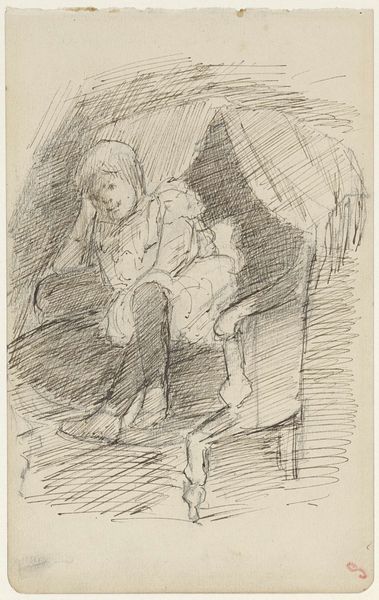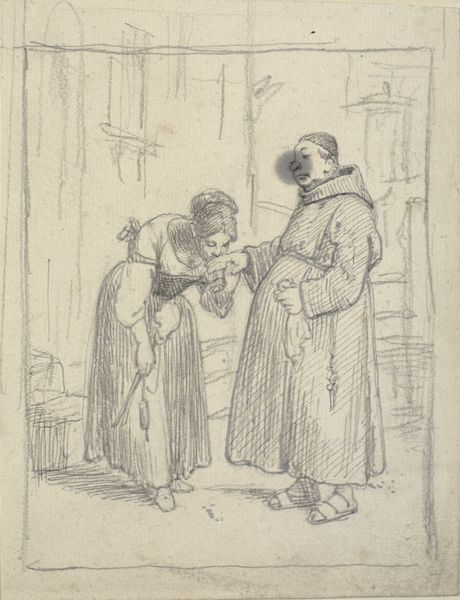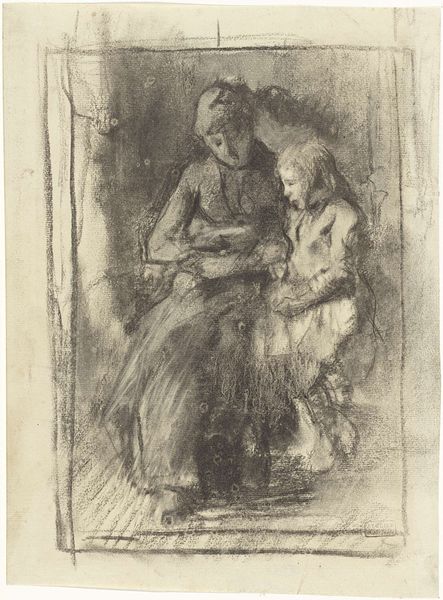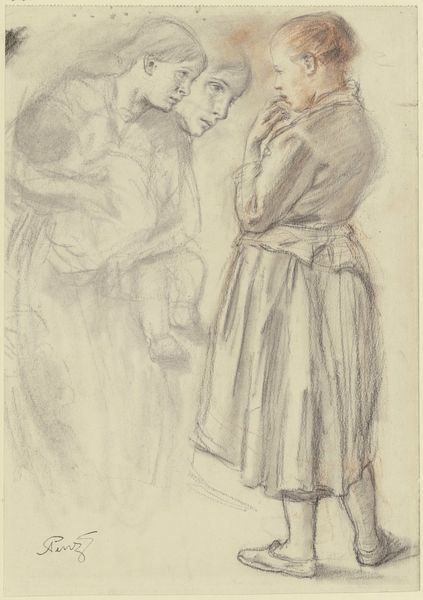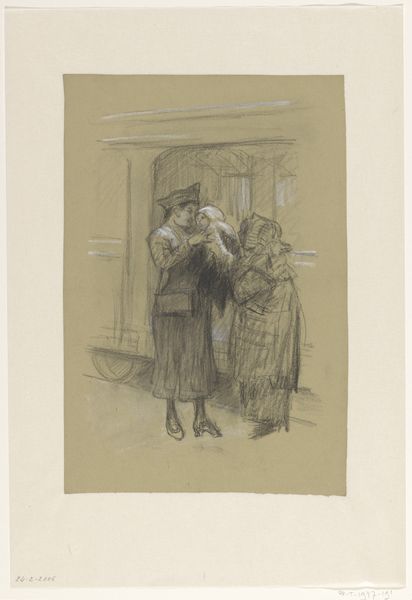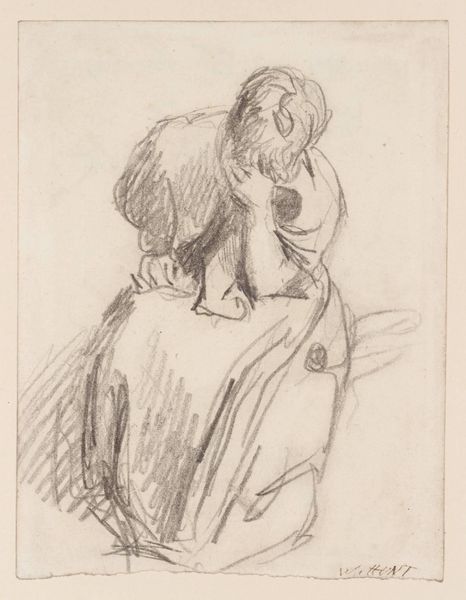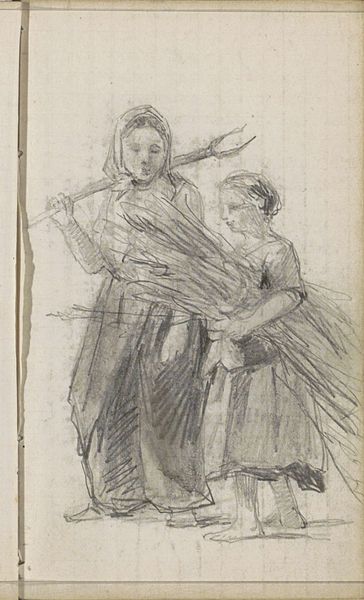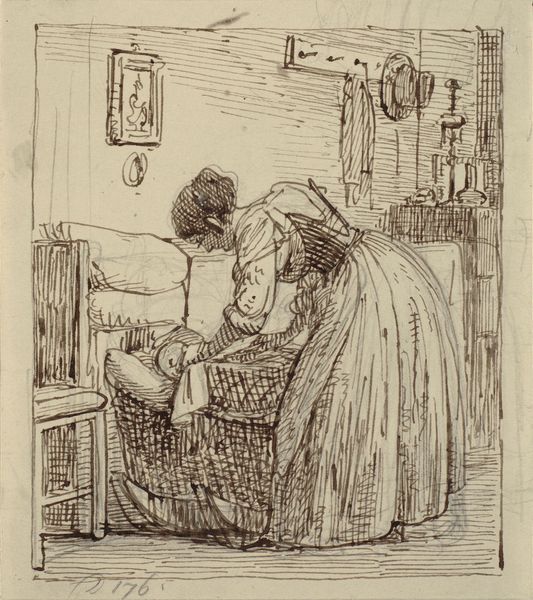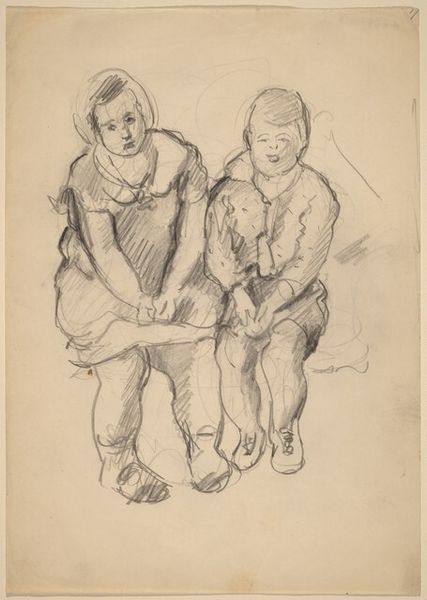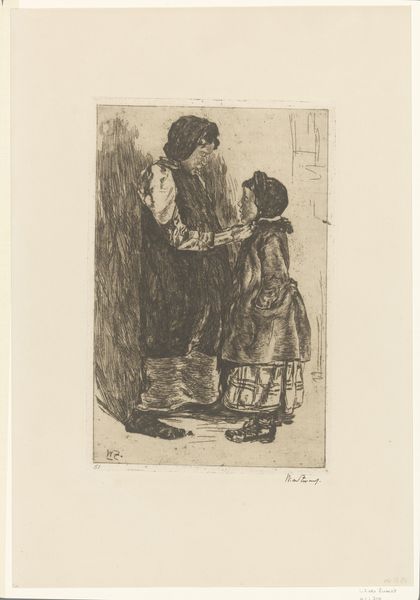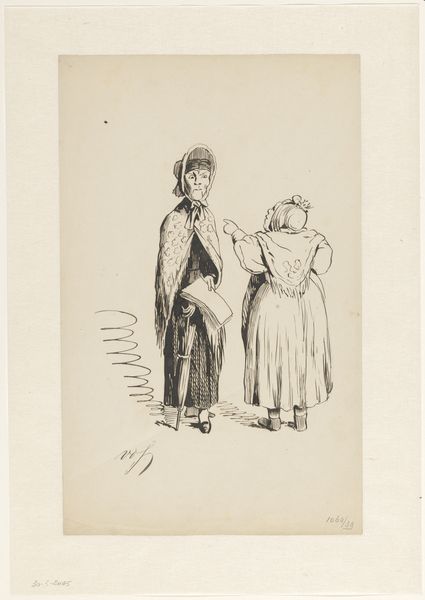
drawing, ink, pencil, pen
#
portrait
#
drawing
#
pen sketch
#
pencil sketch
#
figuration
#
ink
#
pencil
#
pen
#
genre-painting
#
realism
Dimensions: height 208 mm, width 130 mm
Copyright: Rijks Museum: Open Domain
Curator: Look at this drawing by Jozef Israëls, dating somewhere between 1834 and 1911, called "Twee meisjes bij een deur en schets van een meisje," or "Two Girls by a Door and Sketch of a Girl." It's currently held here at the Rijksmuseum. Editor: Ah, yes. At first glance, I see secrets whispered behind cupped hands, the world’s greatest mysteries contained within a childhood pact. It's so lightly rendered, barely there, like a memory half-faded. Curator: It is indeed quite ethereal. Israëls was a key figure in the Hague School, a movement known for its commitment to realism and depictions of everyday life. He aimed to portray the dignity and resilience of ordinary people, often focusing on scenes of domestic life or labor. Editor: So, is it about their everyday reality? I'd be interested to know whose reality. Those smocks aren't everyday for everyone, though they suggest the "everyday," for me—right now—that means what it looks like to be a Dutch middle class girl. A fleeting peek behind closed doors. Curator: The work reflects growing interest in the period toward exploring the lived experiences of different social strata. As part of a broader Realist trend, it aims to bring the realities of the lower social classes to light and thus, gain their social visibility. This becomes an important question in art history in general, where we have an investment in seeing others as worthy and valid subjects. Editor: It gives me such a sense of wistful observation, that intimate sharing of what they know is happening behind a closed door, away from me. Also, note the almost abandoned sketch of the fallen child on the bottom! Almost left on the cutting floor. A shadow lurking for any idyllic portrait! Curator: Yes, that's precisely the kind of narrative device Israëls uses to humanize his subject. The image creates layers: a window to the intimacy and inner experience of the Dutch domestic sphere, juxtaposed with an awareness of class. The vulnerability and innocence captured through careful observation elevate these otherwise overlooked realities of daily life. Editor: Yes! Overlooked moments become luminous! It also reminds me how every single art is art about seeing art and feeling it: The door they peer at, to their interior worlds, my feelings now behind doors in a museum... We really just never stop spying. Curator: I completely agree. The artist allows us to acknowledge our relationship with not only art, but each other. Editor: So here we are: we started whispering.
Comments
No comments
Be the first to comment and join the conversation on the ultimate creative platform.
